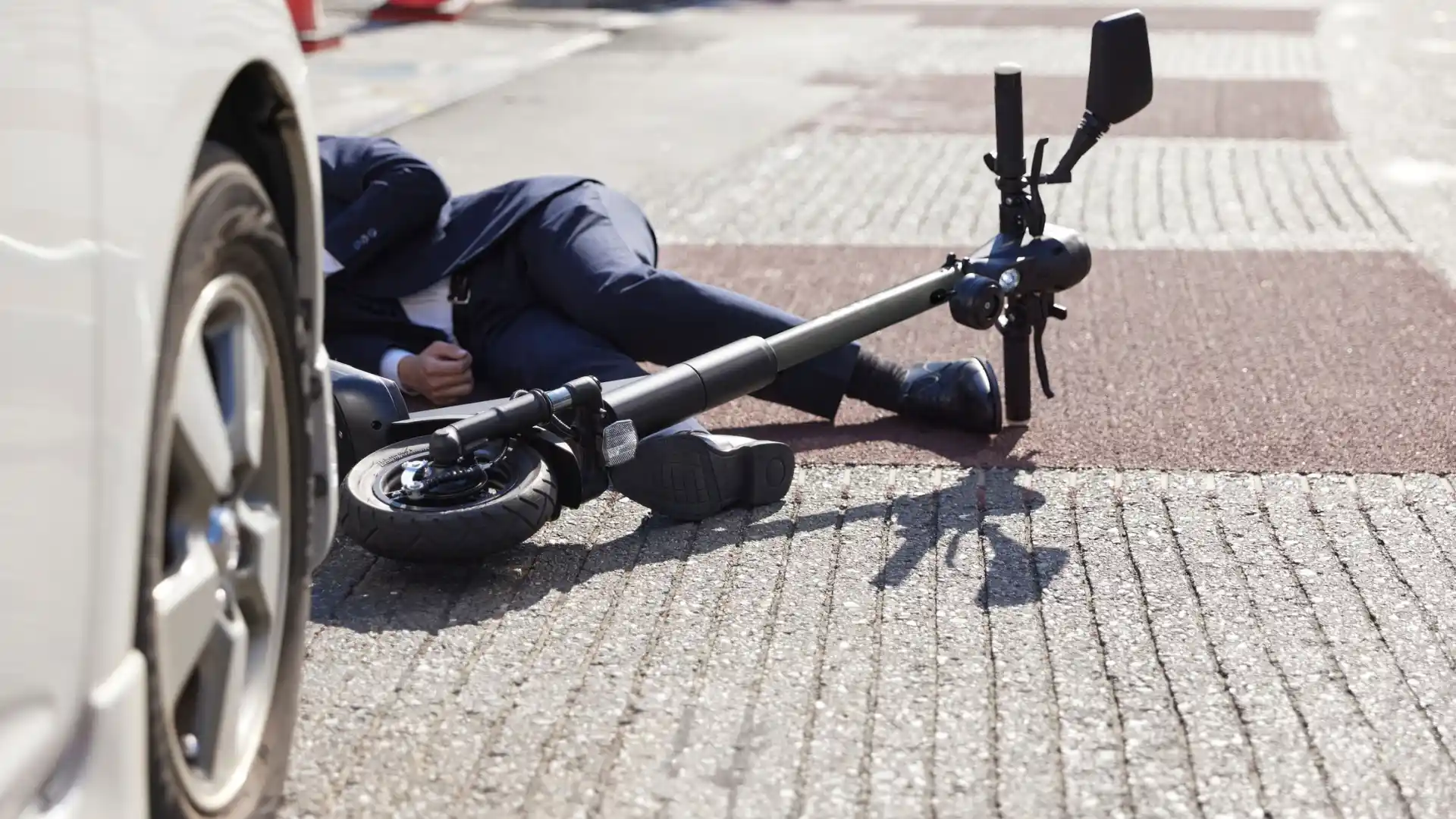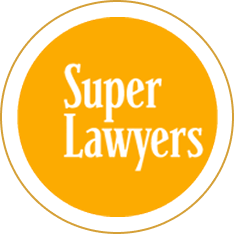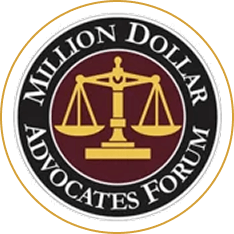
What Is Underinsured Motorist Coverage?
Underinsured motorist (UIM) coverage protects you when you’re injured by a driver whose liability insurance limits are insufficient to cover your damages. Unlike uninsured motorist coverage, which applies when the at-fault driver carries no insurance at all, UIM coverage fills the gap between the at-fault driver’s insurance limits and your actual damages.
Consider this scenario:
You’re injured in a car accident caused by another driver. The at-fault driver carries the South Carolina minimum liability coverage of $25,000 per person. However, your medical bills, lost wages, and pain and suffering total $75,000. Without UIM coverage, you would recover only $25,000 from the at-fault driver’s policy, leaving you responsible for the remaining $50,000 in damages. With UIM coverage, your policy can help bridge that gap.
Underinsured vs. Uninsured Coverage
The difference between UIM and uninsured motorist coverage is critical. Uninsured motorist coverage applies when the at-fault driver has no insurance whatsoever. UIM coverage applies when the at-fault driver has insurance, but the limits are too low to cover your injuries. Both types of coverage work to protect you when the at-fault driver’s resources fall short. Understanding these distinctions is essential when evaluating your personal injury protection options.
Is Underinsured Motorist Coverage Required in South Carolina?
South Carolina law requires all drivers to carry uninsured motorist coverage with minimum limits of $25,000 per person and $50,000 per accident for bodily injury. However, underinsured motorist coverage is not mandatory by law. Insurance companies must offer UIM coverage to policyholders, but drivers can decline it.
Optional, But Highly Recommended
Despite being optional, UIM coverage is highly recommended. Many South Carolina drivers carry only the minimum required liability coverage. According to industry data, a significant percentage of drivers on South Carolina roads are either uninsured or underinsured. This reality makes UIM coverage a practical necessity for protecting yourself and your family.
Minimum Liability in South Carolina
The minimum liability limits in South Carolina—$25,000 per person and $50,000 per accident—are relatively low compared to the actual costs of serious injuries. Medical treatment, rehabilitation, lost income, and pain and suffering can quickly exceed these limits, leaving injured victims with substantial uncompensated damages. If you’ve been injured in an accident, contact an attorney to understand your recovery options and explore settlement possibilities.
How Underinsured Motorist Coverage Works
When you’re injured by an underinsured driver, your UIM claim follows a specific process. First, you file a claim with the at-fault driver’s insurance company. That insurer pays up to their policy limits. Next, you file a claim with your own insurance company for UIM coverage. Your insurer then pays the difference between the at-fault driver’s policy limits and your actual damages, up to your UIM coverage limit.
What Is a Meaningful Offer?
South Carolina law imposes specific requirements for UIM claims. Your insurance company must make a “meaningful offer” of settlement before you can pursue a UIM claim. This requirement comes from South Carolina Code Section 38-77-350. The “meaningful offer” must be a genuine settlement proposal based on the facts of your case, not a token offer designed to satisfy the legal requirement.
What Is the Wannamaker Test?
South Carolina courts apply the “Wannamaker test” to determine whether an offer qualifies as meaningful. The test examines four key factors:
- whether the offer was made in good faith,
- whether it was based on a reasonable investigation of the claim,
- whether it reflected a genuine attempt to settle, and
- whether the insurer clearly explained the offer.
If your insurance company fails to make a meaningful offer, you may have grounds to challenge their denial of your UIM claim. Understanding how to negotiate settlements can strengthen your position.
Understanding UIM Stacking in South Carolina
Policy stacking allows you to combine UIM coverage from multiple insurance policies to increase your recovery. For example, if you own two vehicles, each with $50,000 in UIM coverage, you could potentially stack those policies to access $100,000 in UIM coverage for a single claim.
What Is Class I Insured?
Stacking is not automatic and requires specific conditions. You must be classified as a “Class I Insured” to stack UIM coverage in South Carolina. This classification typically applies to individuals who own multiple vehicles or who are listed on multiple insurance policies. Business entities and commercial insureds face different stacking rules.
How Stacking Might Increase Your Recovery
Stacking can significantly enhance your recovery potential in cases involving serious injuries. If you’ve suffered catastrophic injuries with damages exceeding your single policy’s UIM limits, stacking may allow you to access additional coverage.
However, stacking rules are complex, and not all policies or situations qualify for stacking. An experienced attorney can review your specific circumstances to determine whether stacking applies to your case.
Common Misconceptions About Underinsured Motorist Coverage
 Many South Carolina drivers hold misconceptions about UIM coverage, which leads them to decline it or fail to understand its value. One common myth is that your liability coverage is sufficient protection. In reality, liability coverage protects the other driver if you cause an accident—it doesn’t protect you if someone else causes an accident and is underinsured.
Many South Carolina drivers hold misconceptions about UIM coverage, which leads them to decline it or fail to understand its value. One common myth is that your liability coverage is sufficient protection. In reality, liability coverage protects the other driver if you cause an accident—it doesn’t protect you if someone else causes an accident and is underinsured.
It’s Too Expensive
Another misconception is that UIM coverage is too expensive. In reality, UIM premiums are typically modest, depending on your coverage limits and driving history. The cost is minimal compared to the financial protection it provides. When evaluating insurance claim options, consider the long-term value of comprehensive coverage.
Health Insurance Will Cover It
Some drivers believe that health insurance eliminates the need for UIM coverage. While health insurance covers medical expenses, it doesn’t compensate you for lost wages, pain and suffering, or other damages that UIM coverage addresses. Additionally, health insurance typically includes deductibles and co-pays that you must pay out of pocket.
Drivers Forget About Stacking
Finally, some drivers assume that stacking doesn’t apply to them. If you own multiple vehicles or are listed on multiple policies, you may qualify for stacking even if you didn’t realize it. An attorney can review your policies to determine your stacking eligibility and maximize your personal injury compensation.
How Much Underinsured Motorist Coverage Should You Carry?
Determining the right UIM coverage limit depends on several factors. Consider your vehicle type, driving habits, and personal assets. If you drive a high-value vehicle or frequently travel on highways, higher UIM limits provide greater protection. If you have significant assets, higher coverage limits protect those assets from being seized to satisfy a judgment.
Common Recommendations
A common recommendation is to carry UIM coverage limits that are equal to or exceed your liability coverage limits. If you carry $100,000 in liability coverage, consider carrying at least $100,000 in UIM coverage. For drivers with substantial assets or those who frequently drive, $250,000 to $500,000 in UIM coverage may be appropriate. Understanding how to maximize your settlement starts with adequate coverage limits.
Compare your UIM limits to your liability coverage limits. If your liability limits are significantly higher than your UIM limits, you have an imbalance that leaves you vulnerable. Aligning these limits ensures consistent protection whether you cause an accident or are injured by someone else. Consult with an insurance agent or personal injury attorney to evaluate your coverage needs.
What to Do If You’re Hit by an Underinsured Driver
Immediately after an accident, prioritize your safety and the safety of others.
Call 911 and Document the Scene
Call 911 if anyone is injured. Document the scene by taking photographs of vehicle damage, road conditions, and the accident location. Obtain the at-fault driver’s name, phone number, address, driver’s license number, vehicle information, and insurance details. Proper documentation is critical for your claim.
Report to the Police
Report the accident to the police and obtain a copy of the police report. Seek medical attention promptly, even if you don’t feel seriously injured. Some injuries, such as whiplash or internal injuries, may not be immediately apparent. Medical documentation creates a record of your injuries and treatment.
Notify Insurance
Notify your insurance company of the accident and your intent to file a UIM claim. Provide them with all available information about the accident and the at-fault driver’s insurance. Document all medical treatment, expenses, lost wages, and other damages related to the accident.
Call an Attorney
South Carolina imposes a three-year statute of limitations on personal injury claims, including UIM claims. This means you have three years from the date of the accident to file a lawsuit if a settlement cannot be reached. However, don’t wait until the deadline approaches. Contact an attorney promptly to protect your rights and ensure compliance with all procedural requirements.
Why You Need an Attorney for Underinsured Motorist Claims
Insurance companies employ various tactics to minimize UIM claim payouts. They may dispute the extent of your injuries, challenge your medical treatment as unnecessary, or argue that your damages are overstated. They may also dispute whether the at-fault driver’s policy limits were truly insufficient or whether a meaningful offer was made. Understanding how to deal with insurance companies is essential.
We Investigate and Negotiate
An experienced attorney understands these tactics and knows how to counter them. An attorney investigates your claim thoroughly, gathering medical records, expert opinions, and evidence of your damages. An attorney negotiates with insurance companies from a position of strength, backed by a thorough understanding of South Carolina law and established case precedent.
We Will File a Lawsuit
If settlement negotiations fail, an attorney can pursue litigation. This includes filing a lawsuit, conducting discovery, and preparing your case for trial. Insurance companies take litigation threats seriously and often increase settlement offers when they recognize that an attorney is prepared to take the case to trial. Learn more about what to expect when filing a car accident lawsuit.
We Have the Experience
Crantford Meehan has handled serious motor vehicle injury cases. Our attorneys have recovered millions of dollars for injured clients, including a $2.35 million settlement in a tractor-trailer rear-end collision case and a $1 million settlement in an 18-wheeler collision case. Both of our partners are Trial Lawyers College graduates with AV ratings, demonstrating our commitment to excellence in trial advocacy. Learn more in our client testimonials.
We Handle the Insurance Companies
We understand the details of UIM claims and the tactics insurance companies use to minimize payouts. We’re available 24/7 to discuss your case, and we work on a contingency fee basis, meaning you pay no upfront costs. We recover our fees only if we secure a settlement or judgment on your behalf.
Have you been injured by an underinsured driver in South Carolina? Contact Crantford Meehan today for a free consultation. Call (843) 832-1120 or visit our website to schedule your appointment. Our attorneys are standing by to protect your rights and fight for the compensation you deserve.
Frequently Asked Questions
Can I stack my underinsured motorist coverage with multiple policies?
Yes, if you qualify as a Class I Insured. This classification typically applies to individuals who own multiple vehicles or are listed on multiple insurance policies. Stacking allows you to combine UIM coverage from different policies to increase your recovery potential. However, stacking rules are complex, and not all situations qualify. An attorney can review your policies to determine your stacking eligibility.
What’s the difference between the at-fault driver’s insurance and my UIM coverage?
The at-fault driver’s liability insurance is primary coverage that pays first for your damages, up to their policy limits. Your UIM coverage is secondary coverage that pays only after the at-fault driver’s coverage is exhausted. UIM coverage bridges the gap between the at-fault driver’s insufficient limits and your actual damages. Understanding how car accident settlements work can help clarify these distinctions.
How long do I have to file an underinsured motorist claim in South Carolina?
South Carolina imposes a three-year statute of limitations on personal injury claims, including UIM claims. You have three years from the date of the accident to file a lawsuit. However, you should contact an attorney promptly to ensure all procedural requirements are met and to preserve evidence. Don’t delay—contact us today to discuss your case.
Will filing a UIM claim increase my insurance premiums?
Filing a UIM claim should not increase your premiums because you are not at fault for the accident. However, if the accident was your fault, your premiums may increase. Consult with your insurance agent about how filing a UIM claim may affect your specific policy.
What if the at-fault driver has no insurance at all?
If the at-fault driver is completely uninsured, your uninsured motorist (UM) coverage applies instead of UIM coverage. UM coverage works similarly to UIM coverage but applies in situations where the at-fault driver carries no insurance whatsoever.
How is the “meaningful offer” determined in South Carolina?
South Carolina Code Section 38-77-350 requires insurance companies to make a “meaningful offer” before you can pursue a UIM claim. Courts apply the “Wannamaker test” to determine whether an offer qualifies as meaningful. The test examines whether the offer was made in good faith, based on a reasonable investigation, and reflected a genuine attempt to settle.
Can I recover pain and suffering through underinsured motorist coverage?
Yes. UIM coverage compensates you for all damages recoverable in a personal injury claim, including medical expenses, lost wages, pain and suffering, and other losses. Your recovery is limited only by your UIM coverage limit and the extent of your actual damages. Learn more about how pain and suffering damages are calculated.
















